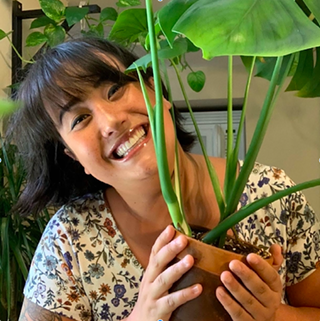It begins on a dark, wet April night. On the damp forest floor, beneath the dead leaves and hardwood logs that are still thawing out from the winter freeze. Something slimy starts to stir from its slumber, and it’s feeling…horny.
This past weekend, April 15 and 16, was the beginning of the city’s sexiest and slimiest migration, the salamander meander. This phenomenon is observed every year at the heart-shaped pond in Hemlock Ravine Park by a team of naturalists from the Museum of Natural History. The naturalists are joined by a limited number of interested citizens, who signed up online for the meander.
About 30 people, mostly families with young children who were donning incredibly bright LED headlamps (a bit of a hazard when they’d stare directly at your face), joined on the Sunday evening and carefully shuffled around the pond, flashlights in hand, hoping to catch a glimpse of the slimy salamanders sexily swimming. One family drove all the way from Annapolis Valley just for the meander.

According to the Museum of Natural History’s website, the yellow-spotted salamander is the largest species of salamander in Nova Scotia. And its breeding habits have been of interest to the museum for decades.
“[The museum] has been doing this for 48 years," Heather McKinnon-Ramshaw, the assistant coordinator of interpretation at the museum, tells The Coast.
“I guess in the early years there would be hundreds of salamanders in the pond. So it was quite a spectacle. We have a little bit of data on when they come to this pond. Since I’ve been doing it, I actually have Excel spreadsheets of the temperature, weather conditions and numbers in the pond, that kind of thing."
And why track the salamanders of this pond in particular? She says because the pond “is heart-shaped. It’s made for romance.”
Some special salamanders
The average lifespan of a yellow-spotted salamander is 32 years. And those salamanders will return, each year, to mate at the same pond where they were born. That means the salamanders in the heart-shaped pond at Hemlock Ravine have been making this same trek for decades.
“Live by the pond. Die by the pond,” is what I like to think one of the salamanders would’ve said to me if I had a special microphone that could interview amphibians.
This is the only time of the year the salamanders make this journey. According to MacKinnon-Ramshaw, salamanders will travel approximately 500 meters to return to their home pond for this mating ritual.
“That's a big distance for a salamander,” McKinnon-Ramshaw says. “They’ve got little legs.”
Future generations and salamander gods
In the next one or two months, any eggs that were laid during the meander will hatch and develop depending on water temperatures, ushering in a new generation of randy amphibians to inhabit the park.
One unfortunate piece of news that may hinder the hatching of any eggs this year is that someone released goldfish into the heart-shaped pond. So, quick PSA Halifax (and really everywhere): Don’t do that; goldfish eat everything and destroy ecosystems. Luckily, McKinnon-Ramshaw is on top of the problem and has immediate plans to work with the city to remove the fish.
In the meantime, if you bring a flashlight and go when it’s dark, you can still spot some salamanders at Hemlock Ravine for the next few weeks.

I wonder how the mating salamanders feel about the flashlights, though.
What goes through their minds when an omnipotent floodlight shines down on them from above? Do they think they're special? Perhaps chosen? Do they think they're being looked upon by an otherworldly amphibian god who chose to bless their union in the name of thy heavenly newt?
Museum staff say salamanders don’t like the light and will swim away if you shine it on them for too long. They say it’s because they are nocturnal, but I like to think it’s because they feel they’re not worthy of the holy-light beam being emitted from their salamander deities. I think it's the salamanders cowering in the presence of a god.
I doubt I'll be invited back for next year’s meander.
















